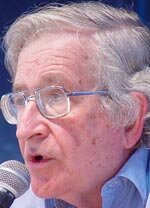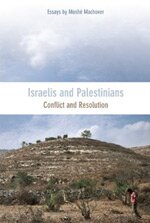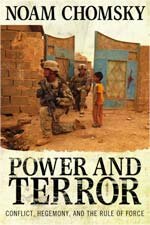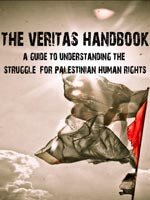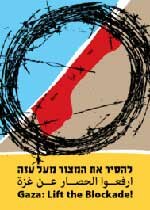By Jonathan Cook, www.jkcook.net – 26 Nov 2010
A shorter version of this article originally appeared in AMEU -
The Link – Volume 43, Issue 5 / November – December 2010
[BACK TO PART I]
PART II

Jonathan Cook
Silencing Palestinians
We will return to the pressures – self-imposed and otherwise – on foreign correspondents. But it is worth considering first how Israel has responded to the challenges posed by a more open media environment that has increased – if only marginally – the opportunities for Palestinians, dissident Israelis and freelance journalists to contribute to mainstream news operations.
Neff describes how his office was staffed exclusively by Israeli Jews in the 1970s. That was then generally the case. But the situation began to change during the 1990s as more Palestinians were employed by news bureaus. There were several reasons: the international media were keen to cut costs and Palestinian staff were cheaper; foreign correspondents began heading more regularly into the occupied territories and needed local fixers and translators to help; Israeli civilians were banned by the Israeli army from entering much of the occupied territories, making them less useful; and with the greater demands of television and the advent of rolling news, media organisations needed people on the ground, especially Palestinian photographers and cameramen, who could capture events as they occurred.
The increasing reliance on Palestinian staff was of great concern to Israel, which was worried both that more damaging images of the occupation would reach Western audiences and that the foreign correspondents would become more friendly with, and dependent on, their Palestinian colleagues. Ultimately, that might lead Western reporters to become more informed about the Palestinian cause.
Israel responded early in the second intifada. In late 2001 the Government Press Office (GPO), a state body that effectively licenses journalists to report in Israel and the occupied territories, began refusing press accreditation to some 450 Palestinian staff employed by international news organisations as well as denying them permits to enter Jerusalem, where the bureaus are located. As usual, Israel used security as the pretext for its policy, arguing that Palestinians entering Jerusalem and Israel might participate in terror attacks. Daniel Seaman, the head of the GPO, urged the foreign media to recruit Israelis instead.
The loss of the press cards posed both a professional and physical threat to Palestinian journalists. They lost the privileges they had enjoyed moving through the checkpoints and around the West Bank. It was also considerably harder for them to prove that they were journalists, making them more likely targets for soldiers as the Israeli army rampaged through the West Bank. According to the International Federation of Journalists, three Palestinian journalists were killed in the occupied territories in 2001, the first full year of the second intifada, and dozens were injured.
The dangers to Palestinian reporters have hardly diminished over the subsequent decade. In 2007, Israeli soldiers shot Palestinian journalists from Agence France-Presse, the Al-Ayyam newspaper and Al-Aqsa TV. Al-Jazaeera broadcast footage showing al-Aqsa’s cameraman, Imad Ghanem, fall to the ground after being shot as he was running from Israeli gunfire holding his camera on his shoulder. As he lay immobile, Israeli snipers shot him twice more in the legs. Both limbs were later amputated. A year later, Fadel Shana, a Reuters cameraman, was killed in Gaza as he filmed an Israeli tank firing flechette shells, a non-conventional weapon that releases thousands of lethal tiny darts. One shell was fired at his car, even though it was marked “Press”. Amnesty International said it suspected Shana had been killed deliberately.
In the first eight months of 2010, according to a study by Wafa, the Palestinian news agency, 101 Palestinian journalists were injured by rubber-coated steel bullets, tear gas or sound bombs, and 52 were arrested by the Israeli army. In May, Reporters Without Borders pointed out that many of the attacks on journalists occurred as they filmed Israeli soldiers’ violence towards Palestinians at regular protests against Israel’s illegal wall-building on West Bank farmland. For example, Hamoudeh Amireh, a self-taught cameraman who documents Israeli army brutality against demonstrators in his village of Nilin, was shot in the leg in September. The attacks have not been restricted to Palestinian journalists: Al-Jazeera English broadcast footage last year of a soldier firing a tear gas cannister directly at one of its journalists, Jacky Rowland, as she reported on a protest at the village of Bilin.
The Foreign Press Assocation in Israel issued a statement in July warning that Palestinian journalists were being “harassed, arrested and attacked” by Israeli soldiers at demonstrations against the wall. It added that the reporters were being singled out, “before these forces turn their attention to the activists or demonstrators”.
Israel’s refusal to issue entry permits to Palestinian journalists has ensured that Jerusalem bureaus are again heavily staffed with Israeli Jews. One effect of this on the news available to the Western media has been noted by Alison Weir of If Americans Knew. On a visit to the West Bank in 2004, she heard disturbing testimony from a Palestinian cameraman about his treatment by Associated Press, the largest American news agency. AP supplies news reports to thousands of US outlets as well as much of the world’s media, making it, as Weir points out, “a major determinant in what Americans read, hear and see – and what they don’t.”
The Palestinian cameraman told her he had recently filmed an unarmed youth, Ahmad, being shot in the abdomen by Israeli soldiers in Balata refugee camp, near Nablus. He sent the film to AP’s Jerusalem bureau, where it disappeared, never to be sent out for broadcast. Later, when he tried to get the footage returned, he learnt that the tape had been erased by the staff. Weir visited Ahmad in hospital to confirm his injuries. She then went to AP’s Jerusalem bureau to speak to its head, Steve Gutkin, about the missing tape. He told her to speak with the head office in New York and threatened to call the Israeli police if she did not leave. Weir spent many months trying to get AP’s head office to explain what had happened to the video. Finally she was told: “The official response is we decline to respond.”
The very few Palestinian journalists who establish an international reputation and manage to report on the conflict unmediated by the Israeli-staffed bureaus in Israel face different kinds of problems.
One such reporter is Mohammed Omar, based in Rafah, Gaza. He has written regularly for Britain’s leftwing New Statesman magazine and the Washington Report on Middle East Affairs. In 2008 he won the Martha Gellhorn prize for journalism and was invited to the awards ceremony in London. He was able to attend only after Dutch officials intervened to get him an exit permit from Gaza and personally escorted him out. On his return, as he crossed over into the West Bank from Jordan on his way back to Gaza, he was made to separate from his Dutch escort. Taken aside by Israeli security personnel, this is what he says took place next:
“I was stripped naked at gunpoint, interrogated, kicked and beaten for more than four hours. At one point I fainted and then awakened to fingernails gouging at the flesh beneath my eyes. An officer crushed my neck beneath his boot and pressed my chest into the floor. Others took turns kicking and pinching me, laughing all the while. They dragged me by my feet, sweeping my head through my own vomit. I lost consciousness. I was told later that they transferred me to a hospital only when they thought I might die.”
Before he was beaten, the officers from the Shin Bet, Israel’s secret police, appeared to be only too aware of who Omar was. They insisted he hand over his “English pounds” – a reference to the £2,500 prize money. Israeli officials later explained Omar’s extensive injuries by claiming he had “lost his balance” during an interrogation over suspicions he was a smuggler.
Other Palestinian reporters are regularly denied permits to leave the West Bank and Gaza to prevent them speaking to outsiders about the abuses they have witnessed and experienced themselves. Khaled Amayreh, who has had a long career reporting in English for outlets such as Al-Ahram and Al-Jazeera, was recently denied such a permit by Israel even though he had been granted an entry visa from Germany to attend a media conference.
Mohammed Omar concludes: “Could it be that despite their tanks, fighter planes and nuclear arsenal, Israel is threatened by our cameras and computers, which give the world access to images and information about their military occupation of Palestinians? … Although Palestinians face this violence daily, the images and our stories rarely travel beyond our borders. Israel seems intent on hiding its oppression of Palestinians under its rule.”
Dissenting Israelis
Over the past decade, since the outbreak of the second intifada, there has been a rapid increase in information about the occupation produced in English by Israelis. The reasons include: a rapid growth in the number of Israeli human rights groups; the greater use of new technology to provide same-day translations into English of much of the Hebrew press; and the improved opportunities for dissident Israeli journalists and bloggers to publish through the internet.
The more extensive reporting of the brutalities of the occupation by Israeli sources has fed into the pressures on foreign correspondents to provide better coverage themselves. Israel has had to respond to this development by delegitimising dissident Israeli journalists and rights groups and making it much harder for them to operate.
Traditionally, Israel has tried to constrain damaging coverage of its policies through the country’s military censorship laws. All articles that might threaten Israel’s security – broadly defined – have to be submitted to the censor for approval. That way, for example, Israel has prevented its journalists from even admitting the existence of the country’s nuclear weapons arsenal. The censor was also busy at work during Israel’s month-long attack on Lebanon in 2006, severely restricting coverage, including of such war crimes as the army’s positioning of its artillery in civilian areas. But censorship alone has not sufficed in a more pluralistic media environment.
The biggest threat to Israel’s narrative is probably posed by Haaretz, Israel’s liberal newspaper of record. It has by far the best coverage of the occupation and is widely relied on by foreign correspondents when deciding on their own reports. In recent years it has become much more accessible through its English edition, and an associated website.
Nonetheless, the paper has tended to limit translations of its Hebrew coverage. That policy, sources at the paper tell me, reflects both the determination of the paper’s editors to stay within the Israeli consensus as the political climate shifts rightwards (and thereby avoid accusations that the paper is damaging the country’s image); and direct pressure from the government. The English-language newspaper and website fail to translate many of the Hebrew stories that are most embarrassing to the Israeli authorities, and remove certain details from other Hebrew reports that present the government or army in a harsh light.
Also noticeable has been the paper’s decision to “let go” several prominent journalists and columnists known for their hard-hitting reports. Thus, Aviv Lavie, who unearthed a damaging story in 2003 about Israel running a secret prison where torture was routine, disappeared from the paper shortly afterwards. The paper’s chief reporter, the prize-winning journalist Meron Rappaport, who regularly dug up exclusives from the occupied territories, was made redundant in 2008. (Four years earlier he had been fired by the country’s biggest-selling newspaper, Yediot Aharonot, which like Israel’s other two main newspapers, the rightwing Maariv and Hayom, is far less tolerant of real journalism.)
At that time, there were many rumours that Haaretz’s two most famous reporters, Amira Hass and Gideon Levy, both of whom write extensively about the occupied territories, were to be axed. Under a barrage of criticism, Amos Shocken, the paper’s publisher, stated: “I understand there are those readers who want Haaretz to look like a protest [manifesto] against the occupation … But a newspaper is not a protest [manifesto]; it’s a newspaper.” Following the complaints, however, Hass and Levy continued to feature prominently.
Nonetheless, in a climate increasingly hostile to dissent, journalists like Hass and Levy have become more marginalised inside Israel, even while maintaining their readership overseas. Levy observed in a recent interview that the Israeli media was “recruiting itself to collaborate with the occupation project” and “playing a fatal role, mainly in maintaining the occupation and the nationalistic and militaristic emotions and sentiments in the Israeli society”. Such emotions are on display against reporters who step out of line, such as Chaim Levinson, another Haaretz reporter who has broken many stories about the occupation. In August he was filmed being beaten by soldiers as he tried to report on Jewish settlers taking over a building in the Palestinian town of Jericho.
The failure to rid Haaretz of its most vocal critics of the occupation appears to have encouraged a change of approach by the authorities. In early 2010 it emerged that the paper’s best investigative journalist, Uri Blau, was in hiding in London after the Shin Bet, Israel’s secret police, had threatened to arrest him. Blau had published a series of scoops over the previous 18 months that had severely embarrassed the army, including by showing that it had committed war crimes.
Many of his reports drew on classified information passed to him by a soldier, Anat Kamm. It was her arrest that led the Shin Bet to Blau. He was ordered to return not only Kamm’s documents but also those of all his other sources. Blau refused, presumably more than aware that doing so would risk exposing the identity of his contacts. After nearly a year in hiding, he returned to Israel in October, after the state finally agreed that he would need to hand back Kamm’s documents only. By press time for this article, it was too early to know if he would be prosecuted.
Nonetheless, whatever the outcome, the Shin Bet’s move had two transparent goals: to scare off potential whistleblowers from contacting investigative journalists such as Blau; and to warn other reporters that they faced a campaign of persecution should they follow in Blau’s path. This tallied with new policies in the army, reported by Haaretz in July, to monitor troops’ phone calls and require polygraph tests to find the source of leaks.
As well as relying on the Israeli media for stories, foreign correspondents have started to turn to a growing number of Israeli human rights groups. These organisations issue regular reports on different aspects of the occupation, and often launch legal cases in the courts against Israeli government policy. The most famous, such as B’Tselem, Adalah and the Association of Civil Rights, are treated as a source of reliable factual information by reporters when they compile their stories. This has not gone unnoticed by Israeli officials.
The Israeli government has stepped up a campaign against these groups, known formally as non-governmental organisations (NGOs), since summer 2009. That was when two major threats emerged to Israel’s defence of its savage attack on Gaza in winter 2008, in which 1,400 Palestinians, most of them civilians, were killed. The first was the efforts of Breaking the Silence, a group of former Israeli soldiers, to publish the testimonies of soldiers who had served in Gaza during the attack. Many of these accounts revealed irregular behaviour by soldiers or evidence of war crimes. The second threat was the publication of a damning UN report in September 2009 by the respected South African judge Richard Goldstone.
Both Breaking the Silence and Goldstone were soon being vilified by the Israeli media and government. Rightwing groups such as NGO Monitor and Im Tirtzu claimed – inaccurately – that much of the Goldstone report drew on information supplied by Israeli human rights NGOs, concluding that these groups had therefore been unmasked as “subversive”. The rightwing groups also argued that it was illegitimate for Israeli human rights NGOs to receive their funding from overseas, and typically from the European Union. The clear implication was that, through their dependence on European funding, the political agendas of the Israeli NGOs had been infected with an anti-Semitic prejudice that many Israelis presume is rife in Europe. The foreign ministry, for example, called on the Dutch embassy to end its funding of Breaking the Silence.
A parallel campaign was also launched against the New Israel Fund, another major financial contributor to good causes in Israel, including to human rights groups. NIF is a Zionist Jewish organisation that aims to promote democratic values in Israel. Its chairwoman in Israel, Naomi Chazan, was quickly turned into a national hate-figure as rightwing groups employed anti-Semitic imagery on billboards across the country, showing her with a horn sprouting from her forehead.
A demand rapidly grew for human rights NGOs to be strictly regulated, with tight restrictions on their foreign funding. Legislation originally proposed in early 2010 and supported by the government was designed to force the NGOs to register as political parties and declare their foreign funding whenever staff spoke publicly. Failure to comply with the regulations would have landed the NGO’s staff in jail.
The bill resurfaced in October, having been watered down by a ministerial committee. It, however, still requires strict financial reporting by human rights NGOs of any foreign donations made to them, at the pain of heavy fines for failure to do so. So far it is unclear whether the legislation will also seek to disqualify the NGOs from assisting in international inquiries such as Goldstone’s. One of the bill’s authors, Zeev Elkin, has said the legislation will “prevent a recurrence of the Goldstone report, which is mostly based on material provided by Israeli organizations … financed by foreign states. The NGOs sometimes cooperate with foreign bodies that use them to infiltrate messages or acts opposed to Israeli interests.”
Sidelined freelancers
If one figure has come to personify Israel’s overtly hostile attitude towards independent reporting it has been Daniel Seaman, the “acting” head of the Government Press Office for a decade until his removal in October 2010. Seaman was replaced by Oren Helman, a former political adviser to the current rightwing prime minister, Benjamin Netanyahu, and a man expected to continue Seaman’s legacy.
In his 10 years, Seaman firmly established the GPO’s ethos, developing a system of regulation that weakened the ability of independent journalists, whether registered freelancers or underground “citizen journalists” reporting for the internet, to cover the conflict.
The citizen or advocate journalist movement emerged at the start of the second intifada as a direct result of the greater presence in the occupied territories of Palestinian solidarity groups, particularly the International Solidarity Movement (ISM). ISM volunteers who were based in Palestinian towns and villages in the West Bank and Gaza that became the main clash-points with the Israeli army quickly realised that the war crimes they were witnessing and photographing were going largely unreported by the mainstream media. Many began filing reports directly to the press and the electronic media.
Their accounts were largely ignored by foreign correspondents, but publication on the internet offered an important resource for researchers as well as evidence that might one day be useful in war crimes trials. Israel reponded in the same way as it had done to Palestinian eyewitnesses: by using violence. In a matter of a few months in 2003, half a dozen internationals were killed or seriously injured by the Israeli army, most notably Rachel Corrie, Tom Hurndall, Brian Avery and James Miller. The latter was a distinguished cameraman but appears to have mistakenly thought he was entitled, like the ISM, to “embed” with the Palestinians.
The effect of this spate of deaths and injuries was to deter many potential ISM volunteers from coming to the region. The remaining activists were sought out by the army in raids into the West Bank and then deported. Israel also increased its vigilance at the borders to deny ISM volunteers entry. On a smaller scale, there have been continuing attacks on foreigners who stand alongside Palestinians at protests and witness the brutality they face. In May, Emily Henochowicz, a 21-year-old American Jew, lost an eye at an Israeli checkpoint as she demonstrated against Israel’s killing of nine passengers aboard an aid flotilla to Gaza. A soldier fired a stun grenade into her face at close range.
Israel’s treatment of the passengers on board the flotilla’s lead ship, the Mavi Marmara, encapsulated many of the military’s standard operating procedures towards independent journalists. In September a UN inquiry revealed that two of the nine passengers who were killed, including an American citizen, Furkan Dogan, were shot dead as they filmed the violence of Israeli commandos who boarded the ship. Israel then confiscated all media equipment from passengers, which has never been returned. A few edited excerpts of video and audio tape – including at least one that is known to have been doctored – were released by Israel to bolster its case that the commandos were the ones attacked.
The GPO has developed a parallel strategy to limit the ability of registered freelance journalists to operate in the occupied territories. Freelancers pose a bigger potential threat to Israel’s narrative than the established foreign press corps. They less often have personal ties to Israel and its Jewish identity; they are less dependent on official – Israeli – sources of information and are therefore more likely to report things from the ground; and they are generally younger, more idealistic and more desperate to make a name for themselves by finding stories other reporters have missed, including ones that involve risk-taking. Freelancers began arriving in greater numbers at the start of the second intifada as the Western media’s interest in the failed peace process grew.
Israel’s new strategy towards freelancers – together with an implicit threat to foreign correspondents – began to emerge clearly during the the so-called disengagement from Gaza in 2005, the removal of a few thousand Jewish settlers from the enclave. Israel required any journalist who wanted to cover the disengagement to apply to the GPO for a place on a limited number of buses that the army was allowing into Gaza each day. Because the enclave was entirely sealed off by an electronic fence and the army, reporters were forced to rely completely on the GPO’s goodwill for one of the few places. At the time, I wrote an open letter to newspaper editors explaining why I would not be among the reported 3,000 journalists seeking to get into the Gaza settlements:
“I am opposed in principle to the idea of being shepherded around by the army while covering this event. How is this not just another form of ‘embedding’? But in any case I am told seats on the coaches will be extremely limited, maybe only a few dozen, and are bound to be snapped up by the media big-hitters. Independent journalists like myself, particularly ones who have not curried favour with the Israeli authorities in the past, are almost certain to be left out of the running. I suspect, however, that a ‘pool reporter’ more favoured by Israel will be sure to find a seat and doubtless will be offering copy to those media not represented by their own correspondent.”
The GPO’s handling of the disengagement was a warning to journalists that, in circumstances where Israel was increasingly controlling entry to the occupied territories, those who were out of favour with the authorities could be denied the access they needed to do their job. That lesson would be reinforced even more firmly after the 2006 Lebanon attack, when Israel believed it had received too much critical coverage because of its “liberal” policy towards the media. It then effectively punished the whole press corps by sealing off Gaza to all correspondents for the three weeks of its attack in winter 2008. In the end, only 15 correspondents selected by the Israeli army were allowed to enter Gaza “embedded” with troops in the very last days of the operation.
In response, the Foreign Press Association in Jerusalem issued a statement: “The unprecedented denial of access to Gaza for the world’s media amounts to a severe violation of press freedom and puts the state of Israel in the company of a handful of regimes around the world which regularly keep journalists from doing their jobs.”
Seaman took a different view: “Any journalist who enters Gaza becomes a fig leaf and front for the Hamas terror organization, and I see no reason why we should help that.” Seaman’s real goal, however, was to stop the reporting of war crimes being committed by Israeli troops in Gaza. He was largely successful. As the New York Times noted at the time, the hundreds of foreign journalists who were barred from entering Gaza had only “access to Israeli political and military commentators eager to show them around southern Israel, where Hamas rockets have been terrorizing civilians.”
Today it is impossible for freelance journalists without a GPO card to get into Gaza – the ban also technically applies to many areas of the West Bank, though ingenious reporters can usually find a way to get around the checkpoints there. From conversations with journalists, it appears that unwritten regulations require that freelance reporters wanting to enter Gaza not only have a GPO card but also have a formal written assignment from an accredited news organisation beforehand. In practice, such requirements exclude almost all freelancers and end one of their main professional roles: seeking out stories the staff correspondents have overlooked.
Israel also denies “Israeli” journalists access to Gaza and areas of the West Bank, on the grounds that it is for their own protection. This rule applies to critical reporters like Hass and Levy. Also included as “Israelis” are journalists like myself, who are not Jewish and do not have Israeli citizenship. However, my residency permit – issued because of my marriage to a Palestinian citizen of Israel – is used as grounds to deny me entry to restricted areas.
In 2006 it became clear that most freelance journalists were to being denied both press cards and work visas, thereby effectively denying them the right to continue residing in Israel. This was done by extending strict laws on foreign workers to include journalists. The Foreign Press Association estimates that in recent years more than 90 per cent of its freelance members have lost their cards. Explaining the new policy, Seaman told Haaretz: “There have been many cases when journalists have been illegal residents.” In the first year of implementation of the rule, more than 60 freelance journalists were reported to have been denied work visas and lost their press cards.
The true aim of the rule change was revealed in the case of Joerg Bremer, the Frankfurter Allgemeine Zeitung’s correspondent. Like many journalists, freelance and staff alike, Bremer had been residing for many years in Israel on a regularly renewed work visa. He had probably done so, like many other correspondents, because his other option – applying for Israeli residency or citizenship – would have made him ineligible to travel through much of the Arab world and also denied him entry to Gaza. Technically, Israeli law allowed him to reside in Israel on a work visa for only five years. Traditionally, however, Israel had not enforced the law in the case of two professions: journalists and academics.
Seaman decided to change that policy. In 2006 Bremer, who had been in Israel for 15 years, discovered that for the first time his visa was not being renewed automatically. Instead his case would be reviewed by a new committee. Concerned, Bremer contacted Seaman, who told him: “Of course you’ll get it, but there are some we don’t want, and that’s why I like the committee.”
Bremer told a Haaretz reporter that he considered the use of a committee in this manner “political”. “It’s not right for the permit to be a matter for a committee, a favour. The foreign journalists can’t have the same status as foreign workers.” When Seaman was confronted with Bremer’s comments, he responded with a series of angry outbursts: “I told him not to make noise … I feel like screwing him over just because of this … He’s a piece of shit.”
Bremer had understood that the purpose of the committee was to weed out most freelance journalists, as well as some staff journalists considered hostile to Israel, by denying them work visas. The policy would also make other foreign correspondents aware that their continuing presence in Israel was dependent on the favour of the GPO. It was, like the places on the Gaza buses, a very blatant attempt to impose a patronage system.
Such a system is most definitely now in place. The GPO’s power over even established journalists is typified by the experiences of Yngvil Mortensen, a Norwegian reporter. In 2007, when she was on contract with the Dagbladet newspaper, she spent 11 months battling the GPO to have her press card renewed. In the end, the card was issued but only after interventions by the Norwegian foreign minister, the Norwegian journalists’ syndicate, an Israeli lawyer and the Foreign Press Association.
Mortensen says: “The real problem, I believe, is my coverage of the Palestinian-Israeli conflict. The Israeli embassy in Oslo in December 2006, at the same time as I applied to renew my Israeli press card, wrote an op-ed in Dagbladet, covering a whole page, where they accused me of onesided coverage. Their op-ed was a reaction to a commentary I wrote two weeks earlier about a massacre in Beit Hanoun [in Gaza], where I among many things asked if it is accidental that so many civilians generally are killed in Israeli military operations.”
When she was awarded a three-month assignment to cover the Palestinian territories for the daily Klassekampen newspaper in early 2010, Mortensen again followed the procedure of applying for a GPO card. The staff told her it would be difficult because she was a freelancer rather than a staff journalist. Later she received a letter from Seaman declining her application, stating that she had failed to meet the GPO’s criteria, though no explanation of how was offered.
She applied to the appeals committee, pointing out that she had in fact met all the written requirements. Later in the year, the committee rejected her appeal, although only on the grounds that her request “was no longer relevant” because the period for which she had requested the press card had expired. The committee did nothing to examine or question the grounds on which the GPO had arrived at its original decision.
Another freelance journalist, Lisa Goldman, submitted a complaint against Seaman to the Civil Service Commission in 2006 following her visit to the GPO office to get a routine renewal of her press card. After an altercation in which she was threatened and sworn at by Seaman, she asked to see his boss. In her letter of complaint, she said he responded: “I am not accountable to anyone. I make all the rules. And just the fact that you have asked me this question means you will never receive a GPO card again.” He also told her he would have her investigated by the Shin Bet, the domestic intelligence service.
Fellow correspondents warned Goldman against lodging a formal complaint against Seaman, saying he would seek to ruin her career in Israel. “Several of my colleagues reported having experienced or witnessed similar confrontations with Mr Seaman. They all said that my only option was to write a letter of apology (one friend told me I should ‘crawl’). The consensus opinion is that Mr Seaman is a civil servant who has become corrupted and sadistic by his power and by the fact that he does indeed seem to be unaccountable.”
The new Hasbara offensive
The final battleground in Israel’s “spin war” is outside Israel – on internet sites and in overseas newsrooms, especially those in the US and those with a global reach.
On the one side, there are many new media platforms for distributing information about the occupation. Increasingly important are blogs – especially ones by dissident American Jews such as Philip Weiss at Mondoweiss and Richard Silverstein at Tikun Olam. Weiss has helped to establish and nurture an online community of mainly Jewish writers that speaks with a refreshing clarity about the Israeli-Palestinian conflict and the power of the Israel lobby in the US. Silverstein, meanwhile, has broken several important stories about Israel leaked to him by Israeli journalists who could not report the issues themselves because of the increasing use of gag orders and censorship.
The readership for these overseas blogs, including among Israelis, is steadily rising. The sites are also freeing Israeli bloggers to become more outspoken: they can relay back to Israeli audiences information from foreign websites without the risk of being first to break censorship rules.
Also making an impact is the slow rise of non-Western media in English. The most significant is Al-Jazeera, a Qatar-based media company that has now both a website and a TV channel in English. Al-Jazeera, both its English and Arabic channels, is deeply disliked by the Israeli authorities (as it is by the Palestinian Authority). Not surprisingly, the English channel has struggled to find cable distribution deals in the US. However, it is demonstrating that a new model of critical but professional reporting about Israel in the mainstream is possible. Other TV channels that are attracting growing audiences are PressTV from Iran and Russia Today.
Perhaps of greatest concern to Israel is that these new media platforms are feeding an interest in a potentially formidable and unifying new campaign against Israel for BDS – shorthand for boycott, divestment and sanctions.
Ranged against these new upstart forces are Israel’s powerful and entrenched lobby groups. As well as political groups such as AIPAC targeting the US Congress and the White House, there are sophisticated media lobbies like Camera and Honest Reporting. Their job is to intimidate reporters in Israel by targeting their less-knowledgable editors overseas with mass letter-writing campaigns and official complaints. A visit to Camera’s website, for example, shows a long list of the most important foreign correspondents in Israel over the past two decades. Each has been on the receiving end of one or two major complaints – enough usually to bring them into line. Reporters worry that too many such complaints to their bosses will start to undermine the paper’s confidence in them.
But while Camera and Honest Reporting have long been targeting any signs of critical reporting in the mainstream media, new pro-Israel lobbies have been needed to counter threats from the electronic media and the BDS movement. One influential Israeli think-tank, the Reut Institute, has termed these new global forces a “delegitimisation challenge” to Israel. The problem was addressed, in particular, at Israel’s annual security convention at Herzliya in early in 2010 at sessions entitled, for example, “Winning the Battle of the Narrative” and “Soft Warfare against Israel”. The key message at these meetings was that the traditional Israeli practice of “hasbara” – a Hebrew term usually translated as “explanation” but really meaning “propaganda” – had to be reinvented for the new age.
The Israeli government first identified the threats posed by the new media to its mainstream narratives back in 2005, arguing that the country must “improve the country’s image abroad – by downplaying religion and avoiding any discussion of the conflict with the Palestinians”. This led to a new campaign, “Brand Israel”, that has targeted major cities around the world for film festivals and food and wine galas featuring Israeli products. Israel has also encouraged the media to focus on Israel’s innovations in hi-tech industries and stem-cell research.
One venture is Israel21c, whose “mission is to focus media and public attention on the 21st century Israel that exists beyond the conflict”. It is reported to be working closely with AIPAC. Israel21c’s success in manipulating coverage by the mainstream media was signalled by the recent news that CNN had broadcast 15 of the group’s pre-packaged videos over the previous year – “reaching millions of viewers worldwide”, as Israel21c boasted on its website.
In a press release, Israel21c added: “Other encouraging stories chosen by CNN this year describe a mixed Jewish-Arab choir that practices its message of coexistence out loud, and a group of Palestinian and Israeli midwives working together to ensure that pregnant mothers in Israel and the Palestinian territories have safe and natural births. Rather than portraying Israel as a place of conflict and strife, these stories have highlighted Israeli accomplishments in science and technology, arts and culture, and philanthropy.”
It is beyond the scope of this article to examine in detail the extent of Israel’s recent success in bringing into line the global news providers and their 24-hour rolling services. The chief target has been the BBC, the influential British-based public broadcaster that has a large international audience for its TV, radio and internet sites. The popular mood in Britain has turned rapidly against Israel over the past decade, and Israel appears to have been fearful that the BBC might reflect such sentiments. But after much behind-the-scenes pressure from the Israeli foreign ministry and its lobbyists, the BBC has moved in precisely the opposite direction – sometimes to a degree that has shocked the British public and even the British government.
Most notable was its refusal in 2009 to broadcast an appeal for that year’s selected charitable cause – helping the homeless and sick in Gaza after Israel’s 2008 winter attack. The BBC claimed for the first time in more than 20 years of running such appeals –part of its public service remit – that doing so would compromise the organisation’s “neutrality”.
Other signs of the BBC’s loss of nerve are its abandonment of truly independent documentaries on Israel. Instead in recent years it has accepted “soft” documentaries from Israeli production crews. Israeli film-makers have had great success offering as their chief selling-point to the BBC various dubious “exclusives” – typically “rare” interviews with senior military people and views inside Israel’s war rooms “for the first time ever”. Israeli film-maker Noam Shalev, who has specialised in these kinds of productions, has made faux-documentaries like the 2006 “Will Israel bomb Iran?” that have offered little more than Israeli foreign ministry propaganda.
“Death in the Med”, the BBC’s investigation in August 2010 into the killing of nine passengers aboard the Mavi Marmara followed the same compromised format, even though it was fronted by a veteran BBC presenter, Jane Corbin. With a largely Israeli crew, Corbin again offered several “exclusives”, including being present duing a training exercise by the “secretive” commando unit that stormed the Marmara, and interviews with the commandos themselves. The illegality of invading a ship in international waters was not discussed, nor was Israel’s theft of the passengers’ media equipment. There was no warning that video footage shown in the documentary was selectively edited by the Israeli government. Audio tape of passengers telling the Israeli commandos to “Go back to Auschwitz” that Israel is known to have doctored was presented as authentic, with Corbin even stating that the insults were “a warning sign”.
Certainly this approach looks as if it will be a key element in Israel’s future media strategy. As its grip on the narrative coming directly out the region weakens, it will fight harder to ensure that reporters of all kinds covering the conflict come under intensified pressure. But Israel is also likely to try to bypass local journalists as much as possible, selling its image and discredited myths to those least in a position to question or doubt them. Editors from the overseas news organisations should be among those who can be more easily swayed.
Israel may be struggling to keep its critics at bay, but its Watergate moment is still far off.
Jonathan Cook is a writer and journalist based in Nazareth, Israel. His latest books are “Israel and the Clash of Civilisations: Iraq, Iran and the Plan to Remake the Middle East” (Pluto Press) and “Disappearing Palestine: Israel’s Experiments in Human Despair” (Zed Books). His website is www.jkcook.net.
A shorter version of this article originally appeared in AMEU -
The Link – Volume 43, Issue 5 / November – December 2010
More IOA articles by Jonathan Cook




















